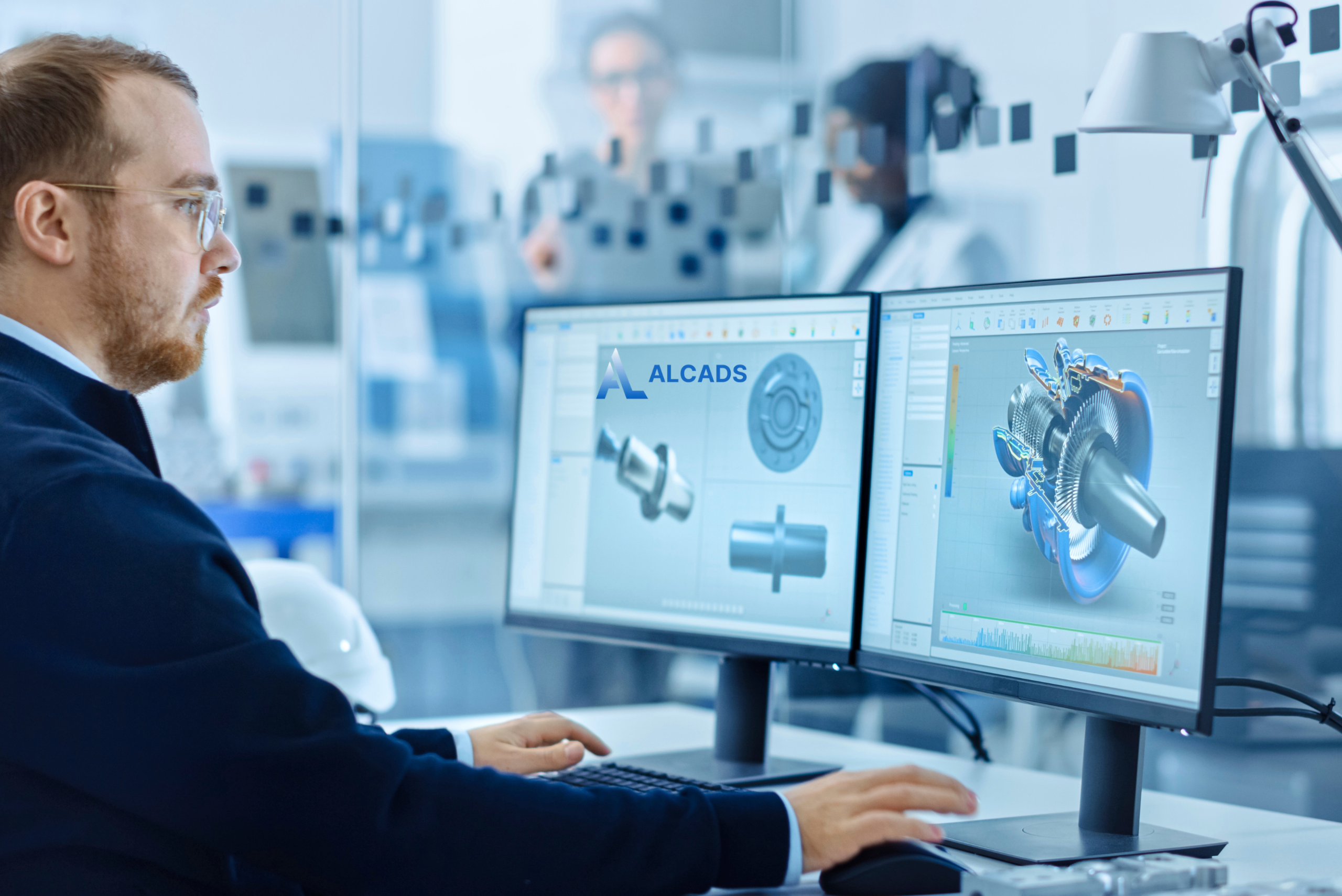
3D Creation Software: Revolutionizing Design Across Industries
The rapid advancement of technology has significantly changed the way we design and create. One of the most transformative tools in the modern world is 3D creation software. This technology has revolutionised industries ranging from architecture to gaming, offering new ways to bring ideas to life in stunning detail.
At ALCADS, we understand the power of 3D creation software and how it can unlock new possibilities for designers, engineers, and artists. In this blog, we’ll explore how this software is reshaping various industries, its key features, and why it’s an essential tool for professionals today.
What is 3D Creation Software?
3D software refers to digital tools that allow users to design, model, and manipulate three-dimensional objects. Unlike traditional 2D tools, this software enables the creation of lifelike models with depth, texture, and realism. These tools can range from professional-grade solutions used by architects and animators to free 3D editing software designed for beginners or hobbyists. Regardless of the application, 3D creation software allows users to visualise, prototype, and refine designs in a virtual environment.Key Features of 3D Creation Software
The capabilities of 3D creation software are vast, making it a versatile tool for users across industries. Here are some of its standout features:1. 3D Modelling and Sculpting
This allows users to design objects from scratch or modify existing models. Using 3D modelling programs, professionals can create complex shapes, from architectural structures to animated characters.2. Rendering and Texturing
Rendering features provide realistic lighting, shadows, and reflections, while texturing tools enable the application of materials and colours for added detail.3. Animation and Rigging
Animation tools allow industries like gaming and filmmaking to bring static models to life with movement and interaction.4. Simulation and Prototyping
Engineers and product designers use simulation tools to test their models in virtual environments, reducing the need for physical prototypes.5. Compatibility and File Exporting
Most 3D modelling programs support multiple file formats, making it easier to share designs across platforms or integrate with other software.Industries Transforming Through 3D Creation Software
3D software has become indispensable in many industries, enabling professionals to work more efficiently and creatively. Here’s a closer look at its impact:1. Architecture and Construction
In architecture, 3D tools allow for the precise modelling of buildings and structures. Designers can create virtual walkthroughs, enabling clients to visualise projects before construction begins.2. Entertainment and Gaming
From animated movies to video games, 3D software is the backbone of the entertainment industry. Using animation tools and rendering features, creators develop lifelike characters, immersive worlds, and stunning visual effects.3. Product Design and Manufacturing
Engineers and product designers use 3D modelling programs to create and refine prototypes. This accelerates the product development process and ensures accuracy in manufacturing.4. Healthcare and Medicine
3D tools are being used to design medical devices, simulate surgeries, and even create prosthetics. This technology enhances precision and customisation in healthcare applications.5. Education and Training
Interactive 3D models are transforming education, offering students hands-on learning experiences in fields like biology, engineering, and physics.Benefits of 3D Creation Software
The adoption of 3D software offers numerous benefits, including:1. Enhanced Creativity
With its versatile tools and features, 3D creation software provides endless possibilities for creative expression. Designers can experiment with shapes, textures, and colours, pushing the boundaries of their imagination.2. Improved Efficiency
By streamlining workflows and automating repetitive tasks, 3D modelling programs help professionals save time and focus on refining their designs.3. Cost Savings
Virtual prototypes and simulations reduce the need for costly physical models, minimising material waste and speeding up the design process.4. Collaboration and Communication
Many 3D tools include cloud-based features that enable teams to collaborate in real time, improving communication and project coordination.5. Realistic Visualisation
With advanced rendering capabilities, 3D software allows users to present designs in lifelike detail, enhancing client presentations and approval processes.Choosing the Right 3D Creation Software
Selecting the best 3D software for your needs depends on several factors. Here’s what to consider:1. Skill Level
Beginners may prefer user-friendly interfaces or free 3D editing software, while professionals might require advanced features for complex projects.2. Industry Requirements
Different industries have specific needs. Architects might prioritise CAD integration, while animators may focus on rendering and rigging tools.3. Budget
While some tools are premium and require investment, there are also affordable and free 3D editing software options for those on a budget.4. Hardware Compatibility
Ensure the software is compatible with your device and can run smoothly on your hardware.How ALCADS Supports Your 3D Journey
At ALCADS, we are dedicated to empowering professionals and creatives with the best tools and insights. Whether you’re exploring 3D modelling programs for the first time or looking to upgrade your existing workflow, we provide the guidance you need to succeed. Our expertise ensures you find the right software to meet your unique needs, enabling you to unlock the full potential of 3D software.The Future of 3D Creation Software
As technology continues to evolve, 3D creation software is poised to become even more powerful and accessible. Emerging trends include:- Artificial Intelligence Integration: AI tools are being added to 3D platforms, automating tasks like texture mapping and object recognition.
- Virtual and Augmented Reality: VR and AR capabilities enable immersive design experiences, allowing users to interact with models in real-time.
- Cloud-Based Collaboration: With cloud tools, teams can work on projects from anywhere, fostering innovation and collaboration.
Conclusion
3D design software has revolutionised the way industries approach design and creation. Its impact is undeniable, from architecture and gaming to healthcare and education. With its ability to enhance creativity, improve efficiency, and offer lifelike visualisation, this technology is a must-have for professionals and hobbyists alike. At ALCADS, we’re here to help you navigate the world of 3D design. Whether you’re looking for advanced tools or beginner-friendly options, our expertise ensures you find the perfect solution to meet your needs.Explore the endless possibilities of 3D creation software with ALCADS today and take your projects to the next level!
